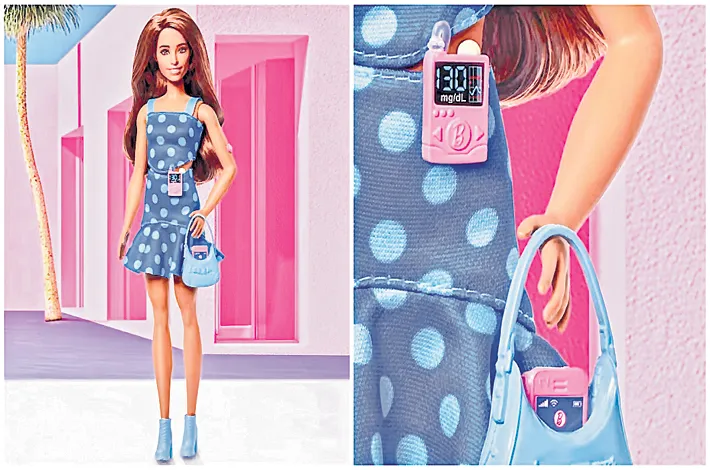New Barbie to help kids cope better with diabetes
19-07-2025 12:00:00 AM

Barbie has done many things since she first appeared in 1959. She's been an astronaut, a doctor, a president and even a palaeontologist. Now, in 2025, Barbie is something else: a woman with type 1 diabetes. Mattel's latest Barbie was recently launched by Lila Moss, a British model who lives with type 1 diabetes. The doll comes with a visible insulin pump and a continuous glucose monitor, devices many people with diabetes rely on.
To some people, this might seem like just another version of the doll. But to kids living with type 1 diabetes - especially young girls - it's a big deal. This new Barbie is not just a toy. It's about being seen. Type 1 diabetes is a condition where the body stops making insulin, the hormone that helps control blood sugar levels. It's not caused by lifestyle or diet. It's an autoimmune condition (a disorder where the immune system mistakenly attacks healthy cells) and often starts in childhood.
People with type 1 diabetes need to take insulin every day, often through multiple injections or an insulin pump. They also need to check their blood sugar regularly, using finger pricks or a continuous glucose monitor worn on the skin (usually the upper arm). Although type 1 diabetes can be effectively managed, there is no cure.
Millions of people across the world live with this condition, and numbers are on the rise. In Australia, type 1 diabetes affects more than 13,000 children and teens, while in New Zealand, around 2,500 children under 18 have type 1 diabetes. Globally, 1.8 million young people are affected.
Young people with type 1 diabetes must think about their condition every day - at school, during sports, at sleepovers and even while playing. They may have to stop what they're doing and check their blood sugar levels. It can feel isolating and frustrating.
Stigma is a big issue for children and young people with type 1 diabetes. Some young people feel embarrassed using their insulin pumps or checking their blood sugar in public. One study found pre-teens with diabetes sometimes felt they received unwanted attention when using devices such as insulin pumps and glucose monitors.








